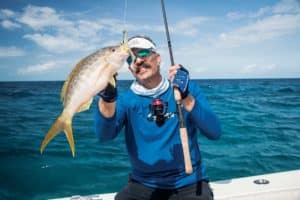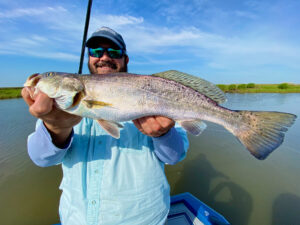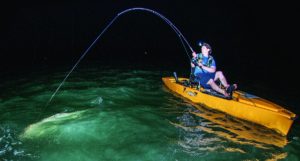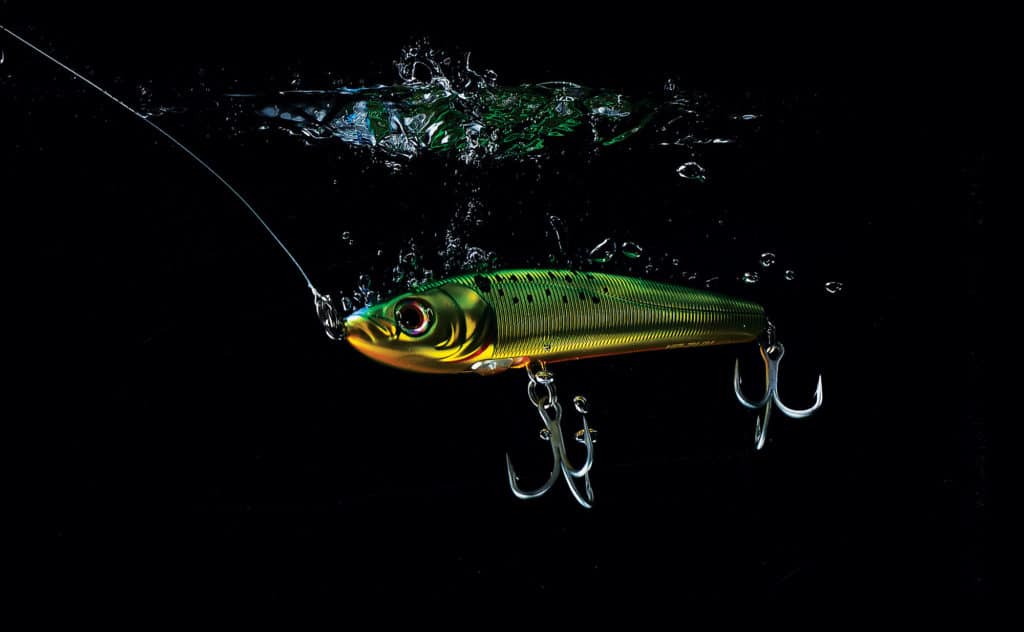
One thing that all successful anglers have in common: They tie good knots. Many learned the hard way—by losing a big fish or watching the tournament winner swim away—that certain knots don’t hold up under pressure, and not all knots work for every situation.
Some knots might be stronger than others; some might be easier and quicker to tie. Knots that fasten a leader to a lure must also allow the bait to swim properly and facilitate an efficient hook-set.
Some inshore captains swear by loop knots, which let the lure swing and move unencumbered. But in the offshore world, where big fish slash and tumble bigger plugs, anglers might need a different connection.
To sample a few of the options, I asked two captains—one inshore guide in Florida, one offshore captain in North Carolina—to describe their go-to knots for tying on lures.
A Great Inshore Loop Knot: the Double Figure 8
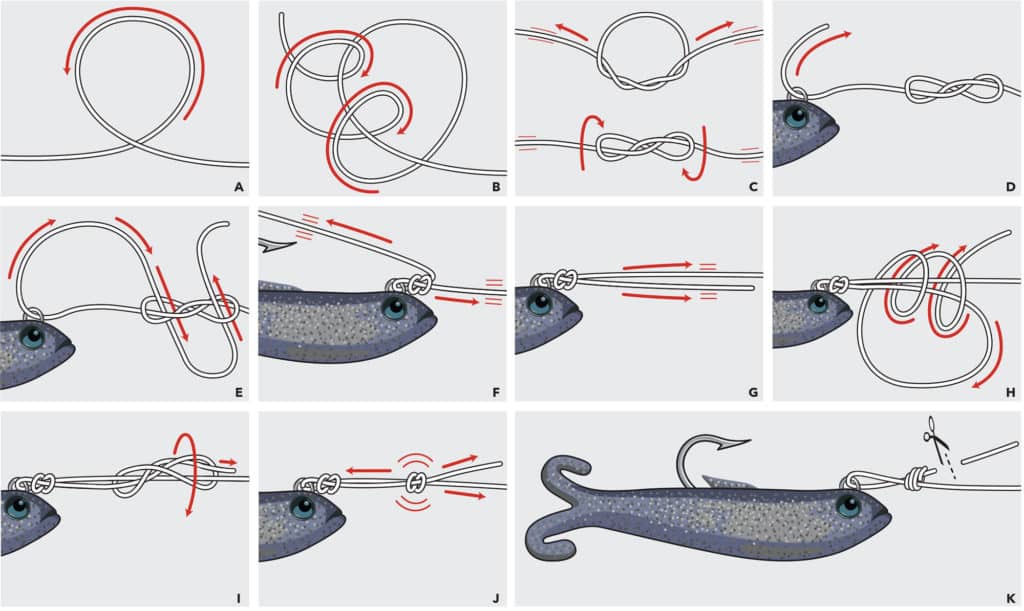
Capt. David Cohen of Cooper City, Florida, fishes year-round for tarpon and snook in Miami’s north Biscayne Bay. When throwing swimbaits for those species, the Salt Life pro staffer likes a loop knot because it makes the lures swim more naturally.
“Any bait that needs movement, I want a loop knot,” Cohen says. “I want to make sure the bait has exaggerated motion, has good action and side-to-side motion to get the best out of the lure. The double figure 8 loop knot is my go-to knot for a loop knot. I’ve tied a lot of loop knots in my day, and the double figure 8 has been tried and tested on big fish over 150 pounds, so I know it works.”
The connection features two figure-8 knots that jam against each other. Cohen says it’s similar to a double uni-knot, which is used to tie one line to another. His theory is that having two knots results in added strength.
“Tarpon, when they get over 150 pounds, can take more than an hour to land, so the knot has to not slip and has to stay true,” he says.
Cohen adjusts the strength of his leader to the size of fish he targets. For tarpon of 20 to 50 pounds, he uses 40- or 50-pound fluorocarbon leaders 3 to 6 feet in length, with a main line of 30-pound braid.
If he’s fishing for 100-plus-pound tarpon, Cohen upgrades his line and leader to land the fish without excessively tiring the tarpon. That means 40- to 60-pound braided line and 60- to 80-pound fluorocarbon leader.
The double figure 8 works especially well, he says, with a DOA Baitbuster—a soft-plastic lure that imitates baitfish such as a mullet, pilchard or sardine.
A Great Offshore Lure Knot: the Nail Knot
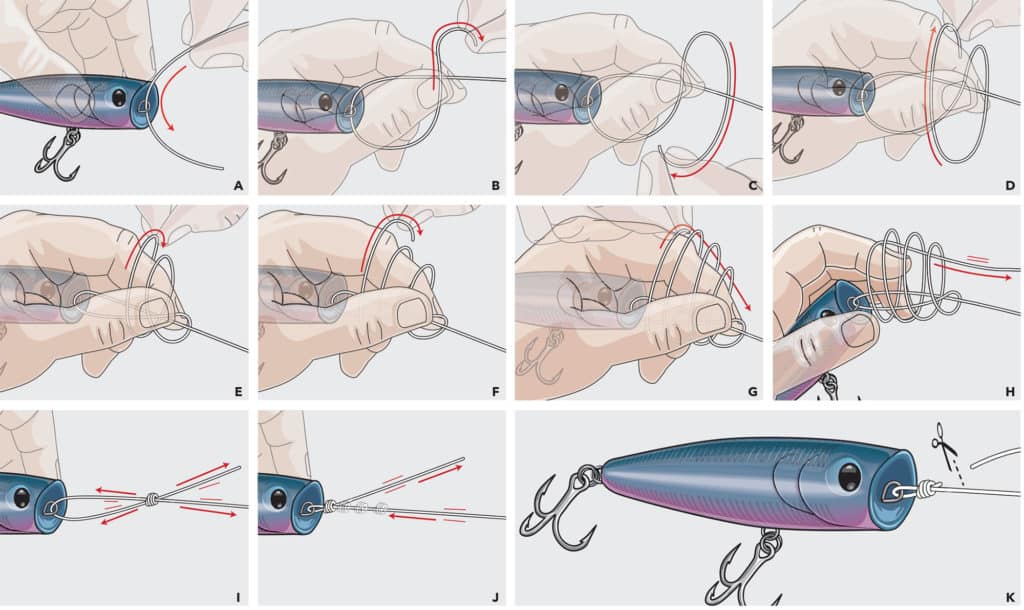
Offshore: Nail Knot Used primarily to attach a leader to a fly line, the nail knot also works great for tying leaders to plugs used for tuna, says Capt. Daniel “Backlash” Davis, of Manteo, North Carolina.
“I like the nail knot because it slides down on the lure ring better,” he says. “I’ve tried other knots—like the perfection loop—but at some point, the hook will tangle in the loop.”
Davis—a longtime charter captain who now runs private boats—uses the nail knot on big offshore poppers made by Rebel, Rapala, and Yo-Zuri that his anglers throw at blackfin, yellowfin, and bluefin tuna up to 100 pounds.
The classic fly line-to-leader nail knot originally used an actual nail, although a short tube can usually substitute these days. The leader is wrapped six times around the line and tube, then inserted through the tube, which is then removed. Pulled tight, the leader is now held securely by its wraps around the line. Instead of a nail or tube, Davis uses his index finger, which makes it quick and easy to tie.
Davis fishes the big tuna poppers on 20-pound Ande Backcountry blue monofilament with 40- or 50-pound Ande pink fluorocarbon leader on a 6½- or 7-foot rod. He also uses the nail knot to tie on jigs for cobia.
Read Next: How to Snell a Hook


